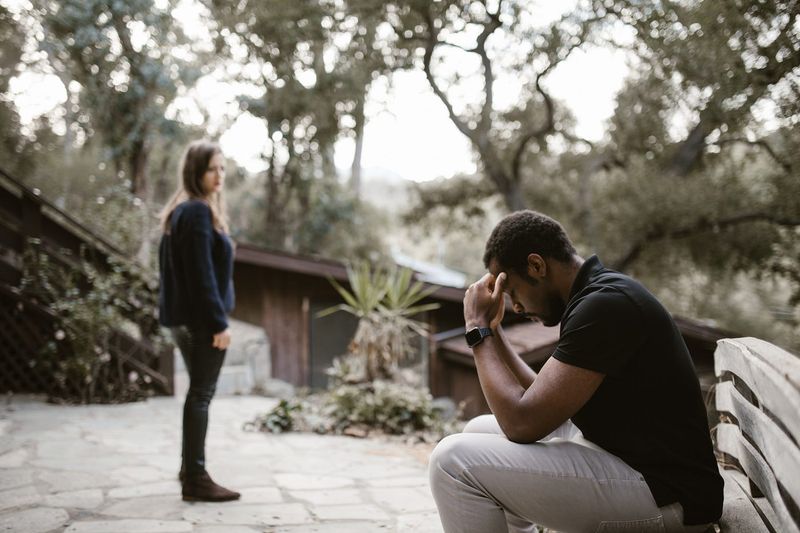In a world where relationships are as diverse as the people in them, the term ‘situationship’ has emerged to describe a connection that’s neither here nor there.
These are the undefined zones of modern romance, where individuals are more than friends but less than partners. This blog post unpacks why situationships are so prevalent today and how they stand apart from mere flings or committed bonds.
With 16 reasons laid out, we’ll explore the nuances and dynamics that make these ambiguous relationships a staple in today’s dating culture.
1. The Relationship That’s Not Quite a Relationship
‘What are we?’ is the question that’s never actually asked. Situationships thrive in ambiguity, offering the comfort of companionship without the commitment of a defined relationship. It’s the modern way of exploring connections without the pressure to label them.
These relationships allow individuals to enjoy each other’s company on their terms. They can share moments, experiences, and even emotions without the traditional strings attached. In today’s fast-paced world, this undefined state can be attractive.
People find solace in the idea of being with someone without the obligations that come with being labeled a ‘couple.’ It’s a scenario where emotional investment is balanced with personal freedom, making it an appealing option for many.
2. Everyone’s Afraid of Labeling Things
In today’s world, putting a label on a relationship can feel like putting a shackle on it. The fear of commitment often stems from the fear of the unknown, and labeling a relationship can suddenly make things feel very real.
When labels are introduced, expectations arise, and with expectations come potential disappointments. People in situationships relish the freedom of not having to meet such expectations.
The absence of a label allows for a connection that’s as fluid as water, flowing and adapting to the needs of both individuals involved. This fluidity makes situationships a comforting safe zone for those wary of diving into more structured forms of commitment.
3. People Want Connection—Without The Pressure
Today’s romantic landscape is a minefield of expectations. Situationships offer a delightful escape from the pressure of traditional relationships while still providing the connection people crave.
In a situationship, individuals can bond over shared interests, enjoy mutual support, and have a companion to spend time with—all without the pressure to perform as a conventional partner.
This connection without pressure suits those who want to foster genuine bond without added stress. It’s a setup that allows for the nurturing of a relationship without the looming pressure of defining what it is, making it particularly appealing in today’s busy world.
4. It Feels Safer Than Commitment
Commitment can feel like a big leap into the unknown, filled with risks and rewards. Situationships, by contrast, offer a sense of safety.
These relationships provide the comfort of having someone to rely on without the fear of being tied down. The freedom to walk away without drama makes them an alluring choice.
This perceived safety net allows individuals to invest as much or as little time and emotion as they choose. By keeping things casual, they can enjoy the closeness of a partner without the potential heartbreak that can come with full-blown commitment.
5. Social Media Makes Everything Feel More Casual
In the age of social media, relationships have taken on a new form of casualness. The constant connectivity can make everything feel fleeting, including relationships.
Social media platforms blur the lines between acquaintances and friends, making it easy for situationships to thrive. The casual nature of online interactions seeps into personal relationships, diminishing the urgency for labels.
This digital age encourages connections that are flexible and non-committal, feeding into the rise of situationships that mirror the transient nature of online interactions. It’s a landscape where relationships can begin and end with a swipe.
6. There’s Less Risk—At First
Situationships often start with the allure of low risk. With no commitments, there’s less at stake, at least in the beginning.
These arrangements can be perfect for those who want companionship without the fear of a difficult breakup. It’s a way to dip toes into emotional waters without diving in headfirst.
However, as time goes on, feelings may develop, and what once seemed risk-free can become more complicated. Despite this, the initial lack of commitment is often seen as a benefit, attracting those who prefer to keep things light.
7. You Avoid Being “The Needy One”
In traditional relationships, expressing needs can sometimes be misinterpreted as being needy. Situationships provide a way to express oneself without the fear of judgment.
People in these arrangements can enjoy the company of others without the pressure to constantly validate each other’s feelings or actions. This can be liberating for individuals who fear being perceived as too dependent.
By keeping things laid-back, participants in situationships avoid the stigma of neediness, allowing for a more relaxed and genuine connection. This can make the experiences shared feel more authentic and less forced.
8. Emotional Intimacy is Real—But Undefined
Even without labels, the emotional intimacy in situationships can be very real. These connections often involve deep conversations and emotional support, but without the traditional framework.
Participants share a bond that’s personal and meaningful, fostering a sense of connection that goes beyond surface-level interactions. Despite the lack of definition, the emotional closeness can be profound.
It’s this undefined depth that makes situationships appealing—they offer the warmth of intimacy without the need to categorize the relationship. This freedom can lead to a deeper understanding between partners.
9. People Are Scared To Admit They Want More
Admitting a desire for more can be daunting. In situationships, individuals often hide their true feelings to maintain the status quo.
The fear of scaring the other person away keeps many from expressing their hopes for a deeper connection. This unspoken desire often lingers beneath the surface, creating a tension that can be both exciting and frustrating.
While the relationship may remain undefined, the underlying wish for more is a common thread, keeping participants caught between contentment and longing. This adds a layer of complexity to the seemingly simple arrangement.
10. It’s Easier Than Facing Rejection
Rejection is one of the biggest fears in dating, making situationships an appealing alternative. With no clear expectations, there’s less chance of experiencing the sting of rejection.
In a situationship, both parties can enjoy each other’s company without the pressure to commit, thus avoiding the possibility of being turned down outright.
This arrangement provides a safe space to explore romantic feelings without the fear of outright rejection. It’s a way to connect with someone while keeping vulnerability at bay, an attractive prospect for many.
11. You Get the Perks Without Accountability
Situationships offer the perks of a relationship—fun, companionship, and intimacy—without the need for accountability. This lack of responsibility appeals to those who want to experience romance on their terms.
Participants can enjoy the excitement of dating without the pressure to meet expectations or make future plans. The freedom to enjoy the moment is intoxicating, making situationships a popular choice.
This setup allows individuals to savor the good times without the weight of commitment, providing a balance between connection and independence.
12. Nobody Wants to “Ruin the Vibe”
Keeping things light and fun is often the priority in situationships. Bringing up labels or definitions can feel like killing the vibe, something no one wants to do.
This desire to maintain a relaxed atmosphere keeps many from discussing the nature of their relationship. It’s a delicate balance between enjoying the present and wanting more clarity.
By avoiding heavy conversations, participants hold on to the carefree essence of their connection, making it easier to enjoy each other’s company without the weight of expectations.
13. There’s Always Someone Else Waiting in the DMs
In the digital age, the lure of potential connections is always just a click away. The constant flood of messages and interactions keeps the dating pool brimming, making it easy to find someone new.
This abundance of options can keep individuals from committing to a single person, as there’s always another intriguing message waiting in the DMs.
The ease of finding new connections fosters a culture of non-commitment, where situationships thrive. It’s a cycle of endless possibilities, keeping people engaged in the thrill of the chase rather than settling down.
14. Clarity Feels Too Vulnerable
Being clear about feelings and intentions can feel like opening up too much, making many shy away from defining their relationship. Situationships allow individuals to connect without revealing their true desires.
This avoidance of vulnerability keeps things light, as partners skirt around the edges of deeper connection. By maintaining ambiguity, they protect themselves from potential heartbreak.
The fear of being too open keeps many in situationships, where they can enjoy emotional intimacy without the risk of full transparency. It’s a way to bond without exposing one’s innermost desires.
15. It Fits Perfectly Into Busy, Distracted Lives
Modern life is hectic, and time is a precious commodity. Situationships fit seamlessly into busy schedules, offering companionship without the time-consuming demands of traditional relationships.
For professionals with packed calendars, these fluid relationships provide a way to connect without rearranging priorities. The lack of obligations makes it easy to enjoy moments together when time allows.
This flexibility suits those who crave connection but can’t commit to the demands of a full-fledged relationship, making situationships a practical choice for today’s fast-paced world.
16. Loneliness Fills the Gaps, Not Love
In situationships, the void of loneliness often gets filled temporarily, but love remains elusive. These connections offer companionship that wards off solitude, yet they lack the depth of committed partnerships.
While they provide moments of shared joy and comfort, the lack of commitment leaves a lingering sense of emptiness. Participants might find themselves yearning for something more substantial.
This arrangement highlights the difference between being alone and being lonely, as temporary connections fill the space without offering the fulfillment of true love.

















